
Johan De Haes
Test driver
This is the Polestar 4 Long Range Single Motor. In this range test, I wanted to discover the range under real, everyday driving conditions here in Belgium. As with my previous tests, I didn’t limit myself to the lab. I took to the road to find out both minimum and maximum driving range, testing the range in the city, on the highway, and on B-roads. Moreover, I wanted to know how fast this electric SUV coupe charges at the fast charger.
The version I tested is the Polestar 4 Long Range Single Motor. This electric car is equipped with a 100 kWh battery, whose usable net capacity is 94 kWh. The electric motor produces 272 horsepower. On paper, Polestar promises a WLTP range of 620 kilometers. It produces 272 hp, features rear-wheel drive and accelerates from 0 to 100 km/h in 7.1 sec. The top speed is 200 km/h and for a base price of 63,499 € you will park it in your driveway.
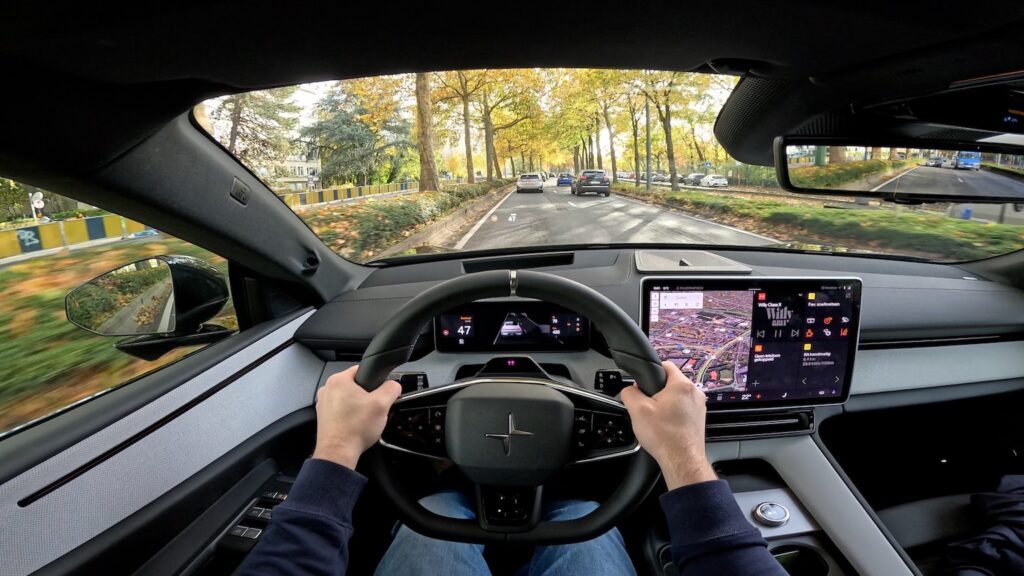
To estimate the minimum driving range, I put the Polestar 4 through its paces in two demanding scenarios. I conducted the test at outside temperatures of around 12 to 14 degrees Celsius. I started in the busiest traffic in Brussels: traffic jam driving, stopping and accelerating. What struck me immediately here was the excellent comfort. The suspension absorbed bumps and speed bumps exceptionally well, which is a big plus in urban environments. After 16 kilometers of driving, with an average speed of only 17 km/h, consumption clocked in at 23.1 kWh per 100 kilometers. If I calculate this based on the net battery capacity of 94 kWh, I arrive at an estimated city range of 407 kilometers. This shows that constant stopping and accelerating still has a significant impact on consumption.

Then I took the highway towards Namur, maintaining 120 km/h whenever possible. Here, the Polestar 4 feels like a true “cruiser. It is stable and the driving assistance systems, such as Pilot Assist, work properly without being intrusive. One thing I did notice was the fairly audible rolling and wind noise in the interior.

After 100 kilometers on the highway, with an average speed of 84.3 km/h, consumption was 20.3 kWh/100 km. This is an interesting figure because it is lower than city consumption. This translates to an estimated highway range of 463 kilometers. Later, when I also did some sporty driving on country roads, the consumption came to 21 kWh/100 km, which translates to 448 kilometers of range.
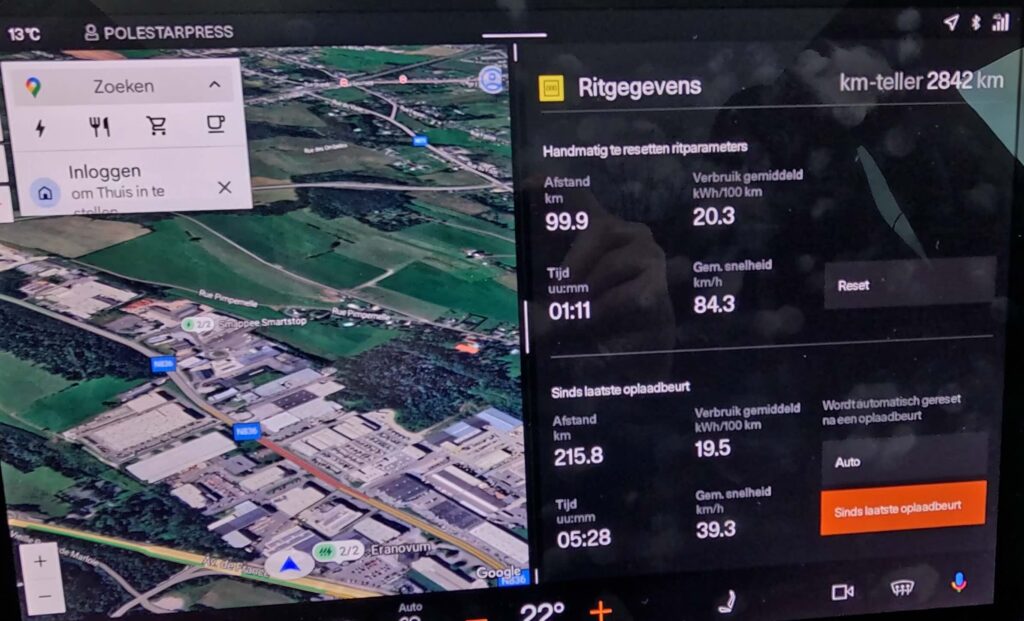
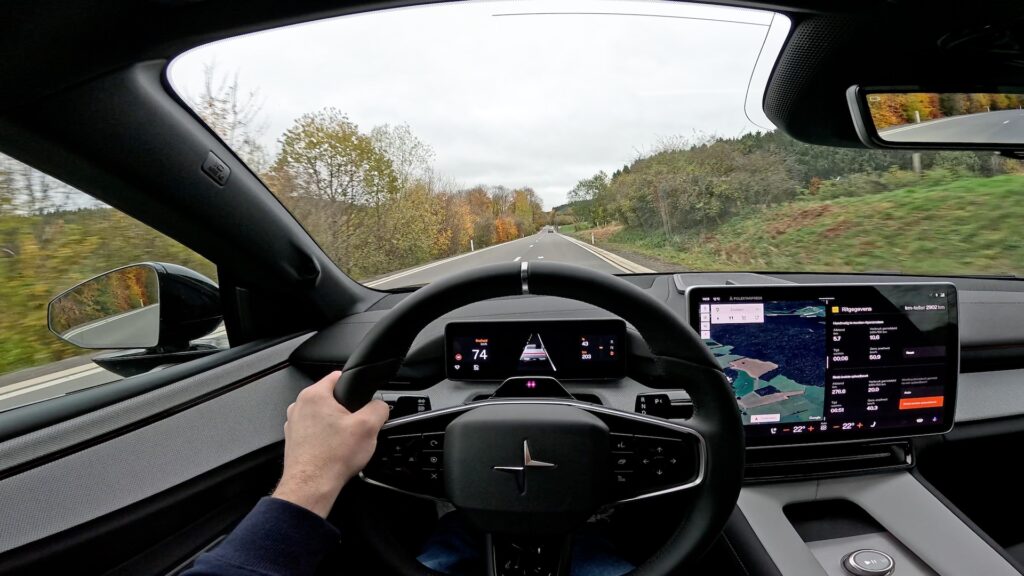
After the test of sporty driving, I also wanted to see the other end of the spectrum: the maximum range. For this, I looked for the most ideal conditions. I drove on typical B-roads with little traffic, no stoplights, and tried to maintain a constant speed of about 70 mph. These are the conditions in which an EV usually performs best. After a short drive of 34 kilometers under these ideal conditions, the consumption clocked in at just 13 kWh/100 km. Of course, this is a short measurement, but if this consumption can be maintained, I’m talking about a theoretical driving range of no less than 723 kilometers. This especially shows how extremely large the influence of my driving style and driving conditions is on the Polestar 4’s final range.

The Polestar 4 can fast charge with up to 200 kW of peak power, with Polestar claiming the battery charges from 10% to 80% in 30 minutes. For this test, I went out with a cold battery that was only 12% full. Although I had entered the quick charger destination into the GPS, the battery did not appear to be optimally conditioned.
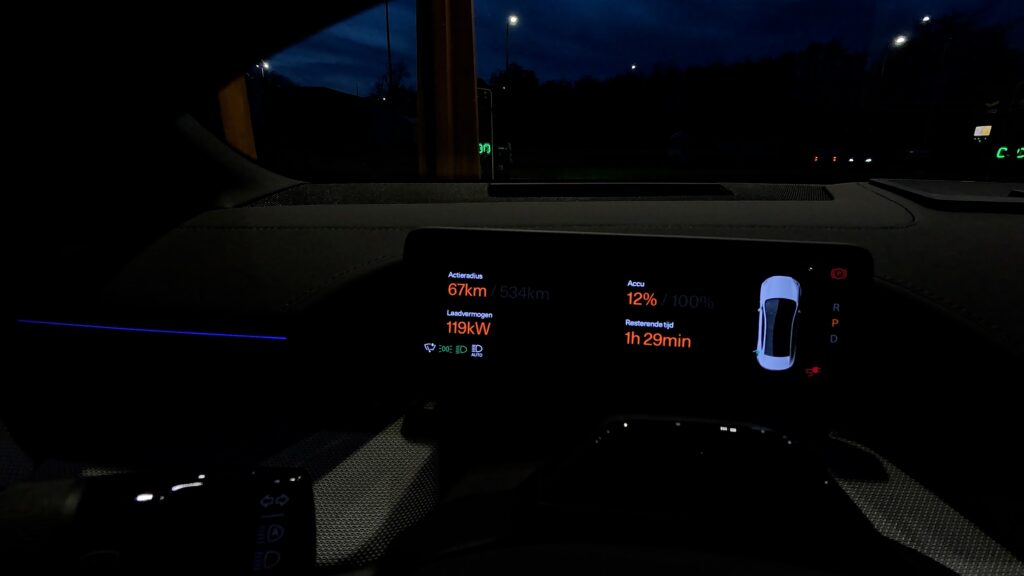
During the test, the car initially charged at around 118 kW. After 10 minutes, this dropped to 109 kW, by which time the battery was at 30% and I had gained about 101 km of range.

After 20 minutes, I saw the speed increase again to 122 kW.
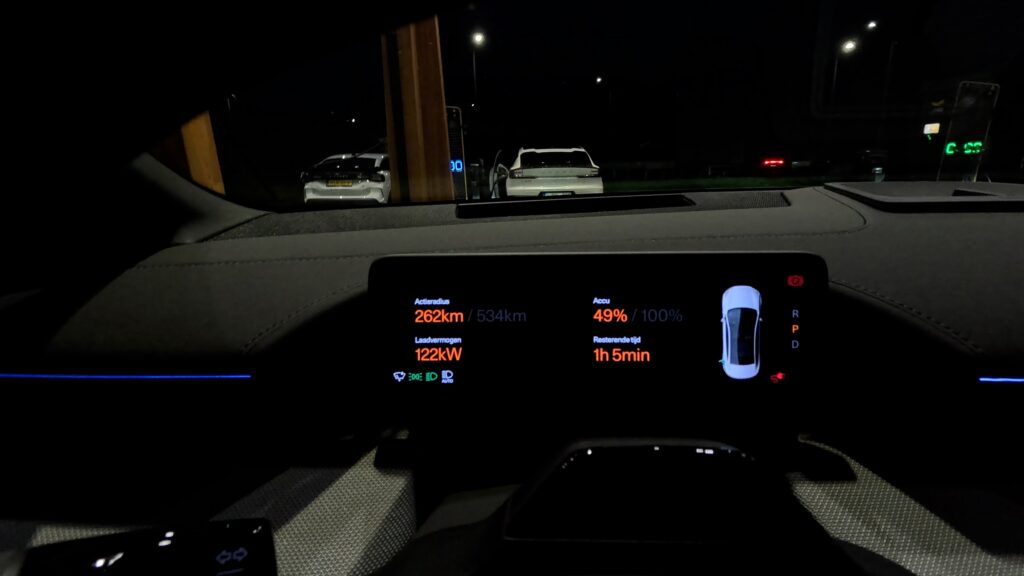
After 30 minutes, the battery was at 67%. The charging rate was then at 93 kW. So in total, I went from 12% to 67% in 30 minutes, gaining just under 300 km of range.
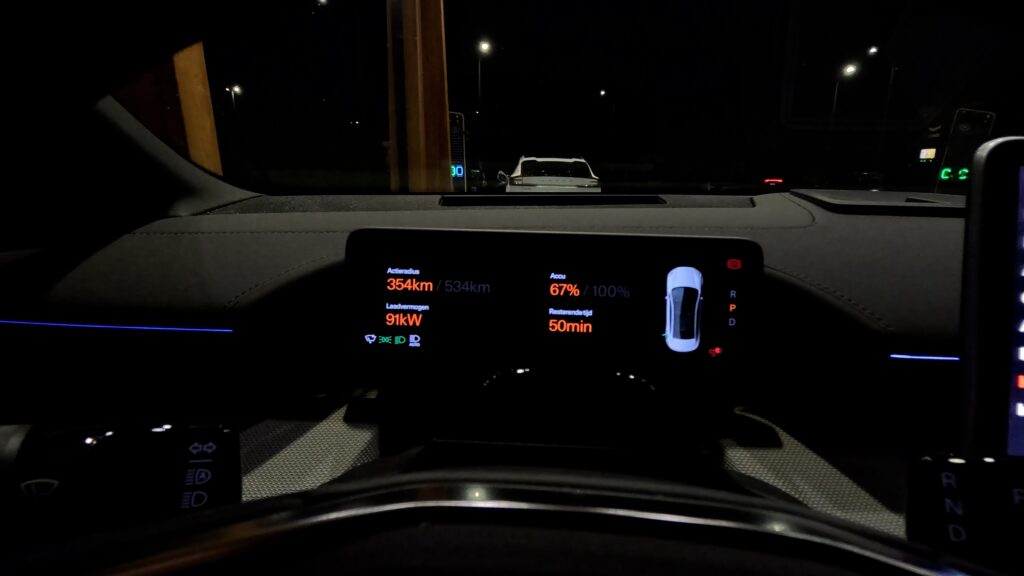
Although I did not get anywhere near the 200 kW mark, the result from 12% to 67% in half an hour with a cold battery is still very useful.
I have not done an AC charging test. As expected, the AC charging rate is 11 kW or optionally 22 kW with the Plus Pack. AC charge time from 0 to 100% is 11 h at 11 kW and 5.5 h at 22 kW rate.
The Polestar 4 is a special appearance. I think the “frameless” mirrors are a handsome stylistic element, but of course the most talked about point remains the lack of the rear window, replaced by a digital mirror. I have to say: this takes getting used to and makes distance estimation a bit trickier, especially at night. The interior, on the other hand, is stylish, feels solid and is practical with plenty of storage space. In the back, there is more than enough room and headroom. Driving the Polestar 4 is excellent; it really excels in comfort thanks to that pleasantly tuned suspension. It’s not a particularly sporty car, but it accelerates smoothly and parking is very smooth thanks to the clear 360-degree camera. The biggest criticism for me personally is the key, which has no physical buttons to open the trunk remotely, for example.
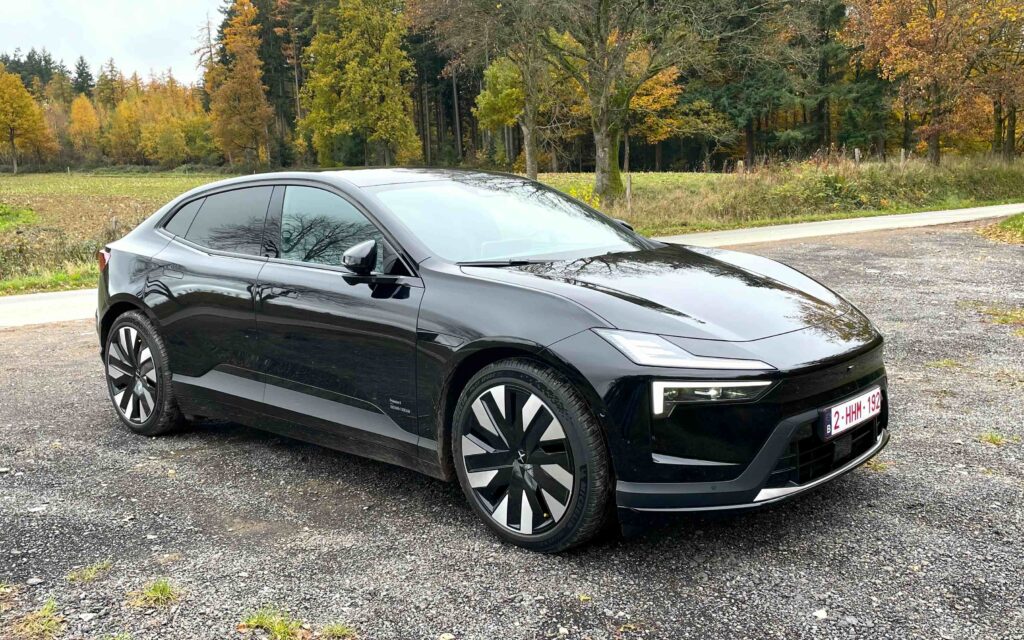 So what is the range of the Polestar 4 Long Range Single engine? From my tests at temperatures between 12 and 14 degrees, the minimum range appears to be somewhere between 407 kilometers (in heavy city traffic) and a theoretical maximum range of 723 kilometers in the most ideal conditions when driving on B roads with little traffic and traffic lights. In daily practice, the range will be somewhere in between, making the Polestar 4 a very suitable and efficient EV for both daily driving and longer distances.
So what is the range of the Polestar 4 Long Range Single engine? From my tests at temperatures between 12 and 14 degrees, the minimum range appears to be somewhere between 407 kilometers (in heavy city traffic) and a theoretical maximum range of 723 kilometers in the most ideal conditions when driving on B roads with little traffic and traffic lights. In daily practice, the range will be somewhere in between, making the Polestar 4 a very suitable and efficient EV for both daily driving and longer distances.

Test driver
© 2024 Proefritten All Rights Reserved.
Add your first comment to this post